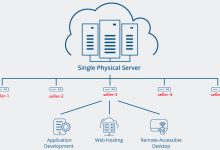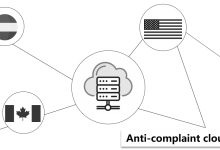Key Considerations for Building Replica E-Commerce Independent Sites: Focus on Complaint Resistance
It is widely acknowledged that building independent e-commerce sites in the replica market requires careful attention to three core factors:
1) Complaint Resistance
The importance of complaint resistance cannot be overstated. Many website builders use generic technologies and often lack sufficient industry experience. They tend to underestimate the critical nature of complaint resistance in replica e-commerce sites. Some even believe that using standard servers is enough and claim their sites can operate for years without issues. This, however, is a serious misconception.
Once your site gains some traction, DMCA complaints become inevitable—especially for high-traffic sites. Receiving multiple takedown requests daily is not uncommon in this space. Without proper complaint handling and resilient hosting strategies, your site risks frequent downtime and loss of revenue.

If you neglect complaint resistance, your website could be shut down at any time, with all data permanently lost—an unrecoverable disaster. This is not alarmism.
Over the past few years, I have witnessed many sites running smoothly one day, only to have their servers forcibly shut down overnight, resulting in complete data loss. Those who underestimate the importance of complaint resistance either lack a deep understanding of the replica and niche independent e-commerce market or their sites are essentially “inactive” with little to no traffic or value, so no complaints arise.
Sites in this space that have lasted over ten years and are worth millions owe their longevity to strong complaint resistance and effective DMCA handling. Complaint resistance is one of the essential skills for success in this industry.

I have discussed complaint resistance in a previous article, and for those interested, you can explore it further there: Why Million-Dollar Replica E-Commerce Sites Survive: Strong Complaint Resistance
A word of caution: many so-called “Dutch complaint-resistant servers” are often overrated. When it comes to hosting, only actual users truly know how effective a server is at handling complaints. Throughout my 16 years of building sites, I have used no fewer than 30 Dutch hosting providers. Many promises about complaint resistance from these providers turn out to be empty claims. As soon as a recognized brand files a complaint, these hosts panic and promptly remove your content, which is extremely disappointing.
2) Performance
I was just talking to someone in the industry who told me her website was incredibly slow. I ran a test for her, and wow — the average load time was 6 seconds!

That’s a huge problem. Potential customers simply won’t wait around. Who wants to wait 6 seconds for a single page to load?
Take a look at the sites I’ve built for clients. I can’t claim they load instantly worldwide, but in major countries, they generally load within seconds.

Loading speed is extremely important. Slow loading leads to high bounce rates and poor conversions. Any load time over 3 seconds is considered slow.
Website performance depends on two main factors: server quality and internal code optimization.
When a website loads this slowly, it’s almost certain that both server performance and on-site code optimization are lacking. For example, improper rendering can be a major issue.
3) Bandwidth
Here, bandwidth refers to the server’s download speed — essentially, the speed at which the website responds to visitors.
Dutch servers are often able to deliver near-instant loading times overseas mainly because their network speed is unrestricted. The response speed depends largely on the user’s upload speed; the faster their upload speed, the faster the server’s download speed can be.
There are two common types of bandwidth offerings from Dutch hosting providers. One is a nearly unlimited data transfer, such as 100TB per month — equivalent to about 100 × 1024GB, or roughly 100,000GB, which is more than enough for most sites.

The other type is truly unlimited bandwidth, known as True-Unmetered. Although it limits download speed to around 100Mbps, this speed is still sufficient to meet the fast-loading requirements of replica e-commerce websites.
Co-Hosted Servers Solution
Let’s continue analyzing the case of the website with a 6-second load time. Below is the server information she was using at the time:

Key Specs: 2-Core CPU, 8GB RAM
This “2-core” CPU refers to vCPUs — virtual cores — and in reality, it only has one physical core. You can think of it as a single-core CPU running two virtual threads. The 8GB of RAM is acceptable, as memory is relatively affordable and rarely the main performance bottleneck.
When it comes to building replica independent e-commerce websites — especially in highly competitive markets — I personally believe the minimum configuration should be 4 vCPUs and 8GB of RAM. Ideally, you’d want 8 vCPUs, which typically translates to 4 physical cores plus additional logical threads that help with concurrent processing.
In short, building high-performance, stable independent sites in this space requires three things:
strong complaint resistance, powerful computing resources, and high bandwidth. As a result, higher costs are the norm — not the exception.
We asked this friend how much she was paying for her 2-core, 8GB setup. She mentioned she’s using a server from Ginernet, which costs $30 per month, or $360 per year.
Given the relatively low specs, that’s quite a high price — it’s clear that this hosting provider is not cheap for the level of performance offered.
However, by spending just a little more, I was able to upgrade to a 16-core server — offering 7 to 8 times more power than the previous setup.
Thanks to over 16 years of experience in replica e-commerce industry, I have a deep understanding of the server market and know exactly where to find the best value for high-performance hosting.

In addition, the server includes 32GB of RAM and unlimited bandwidth resources.
We all understand that high-performance, complaint-resistant servers don’t come cheap. A single dedicated machine can cost up to $1,989 per year.
However, for users who don’t handle massive traffic volumes, renting such an expensive server is often a waste of resources.
E-commerce websites typically fall under lightweight I/O tasks and efficient asynchronous processing. They require relatively low memory and, with proper file descriptor tuning, can support tens of thousands of concurrent connections.
Even for I/O-intensive workloads, it’s possible to handle 160 to 1,600 concurrent connections, depending on the system setup.
In simple terms, the server can easily handle at least 160 concurrent IP connections at the exact same moment — not just across adjacent seconds, but truly simultaneous requests.
In real-world operations, even for an e-commerce site with 1,000+ daily active visitors, the estimated concurrency usually falls between 2 and 12 users, depending on whether it’s during peak or off-peak hours.
Even for high-intensity, peak-driven traffic like TikTok livestream promotion, the actual need rarely exceeds 30 concurrent users. That means at least 130 concurrent connection slots go unused most of the time — leaving CPU and memory resources underutilized.
This is where the concept of crowdfunded (or co-hosted) servers becomes extremely valuable. By pooling resources, we can greatly reduce the per-user server cost. For example:
If one high-performance server costs $1,989/year, and each user only requires support for up to 30 concurrent connections, the same machine can be shared among 5 sellers — bringing the individual cost down to just $397.80/year.

Because each seller’s traffic peaks at different times and operational styles vary, there’s no interference between users, and resource allocation remains independent and efficient.
In effect, each seller gets nearly 100% of the value of the full server without paying full price — enjoying a 5x performance advantage at 1x the cost. That’s the true meaning of cost-effectiveness.

Crowdfunded servers are one of the most optimal solutions for deploying independent e-commerce websites — and when it comes to server usage efficiency, there’s simply no better alternative.
Most mainstream SaaS website builders on the market — such as Shopify and similar platforms — follow a similar strategy. They pool server resources to deliver maximum performance at the lowest possible cost for each user.
This co-hosting model ensures that server performance is fully utilized, while individual sellers benefit from affordable, scalable infrastructure. It’s a proven method to balance performance, cost, and reliability — especially for startups and fast-growing online stores.
 Custom E-commerce Solutions for High-Quality Designer-Inspired Fashion Replicas | Website Development, Dropshipping, Payment Integration for PayPal and Stripe, Ad Cloaking Services
Custom E-commerce Solutions for High-Quality Designer-Inspired Fashion Replicas | Website Development, Dropshipping, Payment Integration for PayPal and Stripe, Ad Cloaking Services



![5 Best WordPress Themes for Replica Product International Trade Websites [Recommended]-Custom E-commerce Solutions for High-Quality Designer-Inspired Fashion Replicas | Website Development, Dropshipping, Payment Integration for PayPal and Stripe, Ad Cloaking Services](https://replicasmaster.com/wp-content/uploads/2025/06/1-1-220x150.jpg)



















